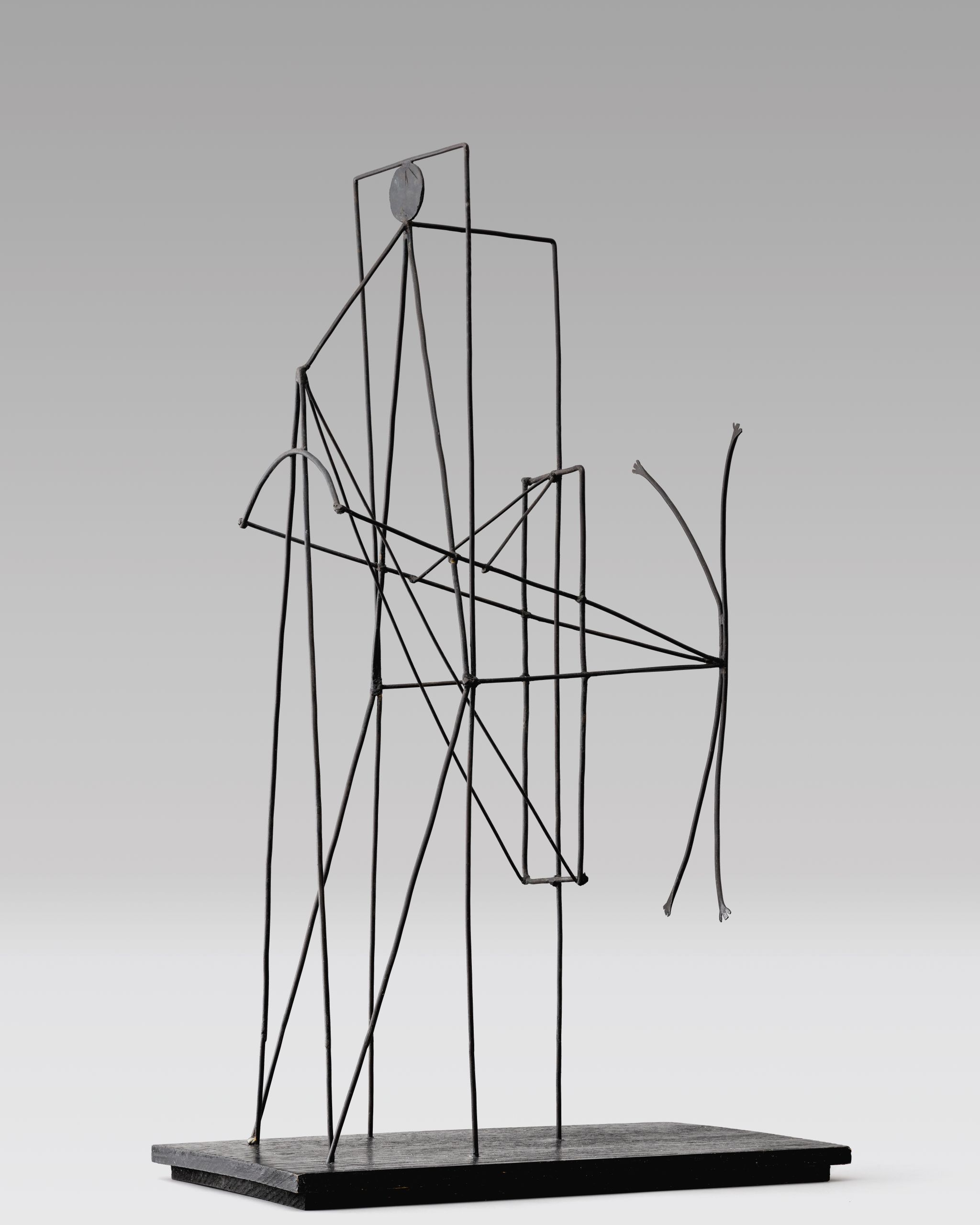Drawings in Space
In 1909, in the midst of the rise of Cubism, Picasso modeled the bust of his partner Fernande Olivier, transforming her anatomy and distinctive features into geometric and organic facets, twisting and condensing them to achieve as never before what he had experimented with in his Cubist painting.
The same need to transcend two dimensions led Picasso to experiment further with sculpture in the late 1920s, when he sought industrial materials and techniques to construct what his gallerist, Daniel-Henry Kahnweiler, called “drawings in space.” This phase began with the commission he received to create a monument for the tomb of his friend, the poet Guillaume Apollinaire. Picasso made a series of sketches of filiform human figures made up of geometrical silhouettes, and enlisted the help of sculptor Julio González and his technical knowledge to transfer his designs to sculpture. The pieces never came to be placed on the poet’s tomb.

